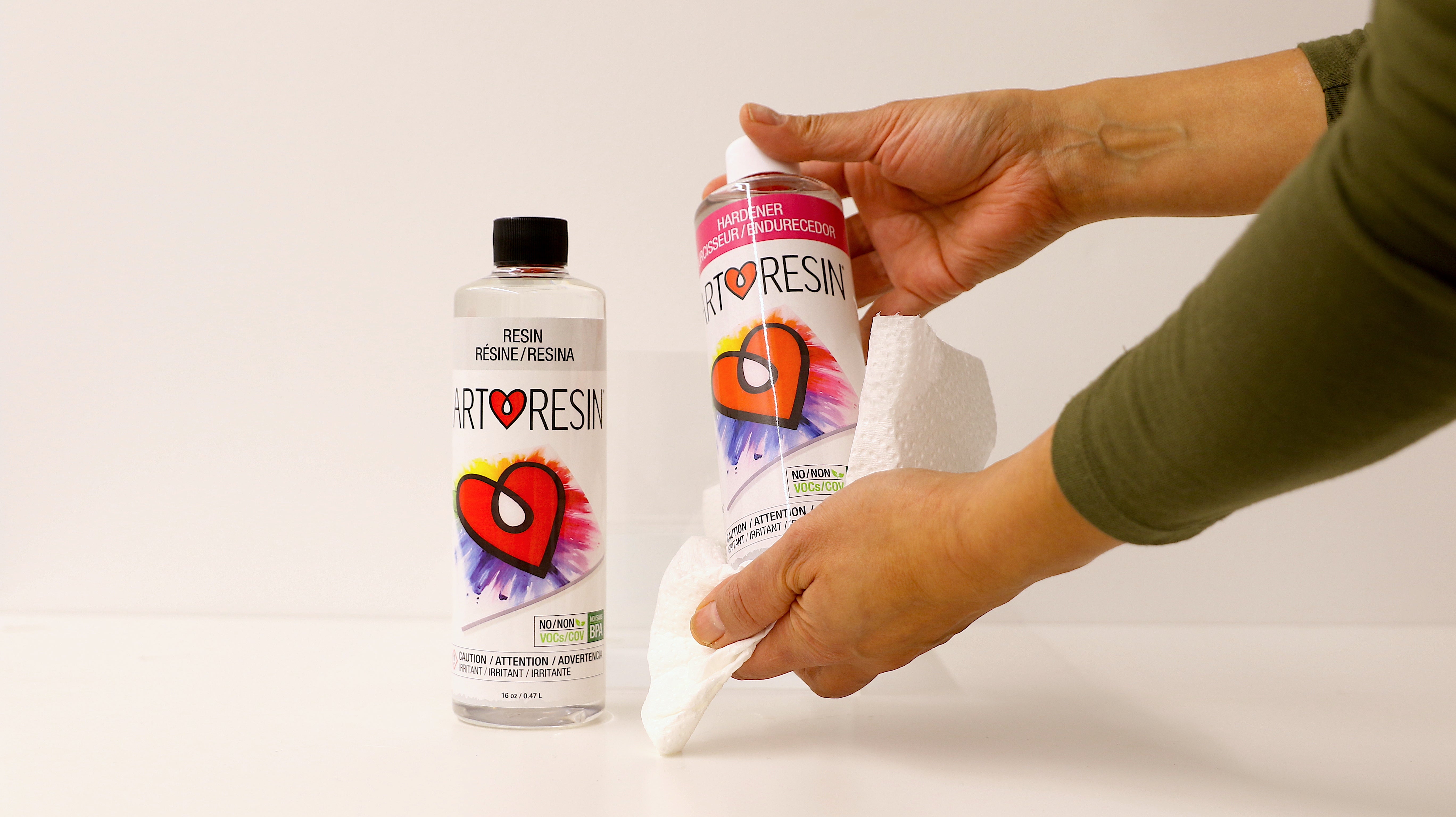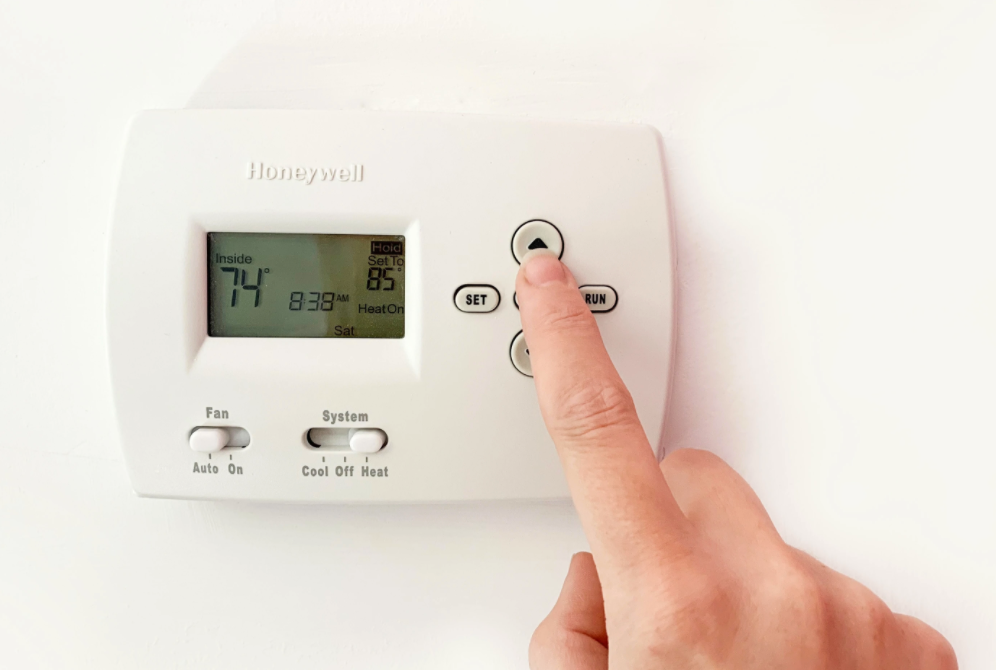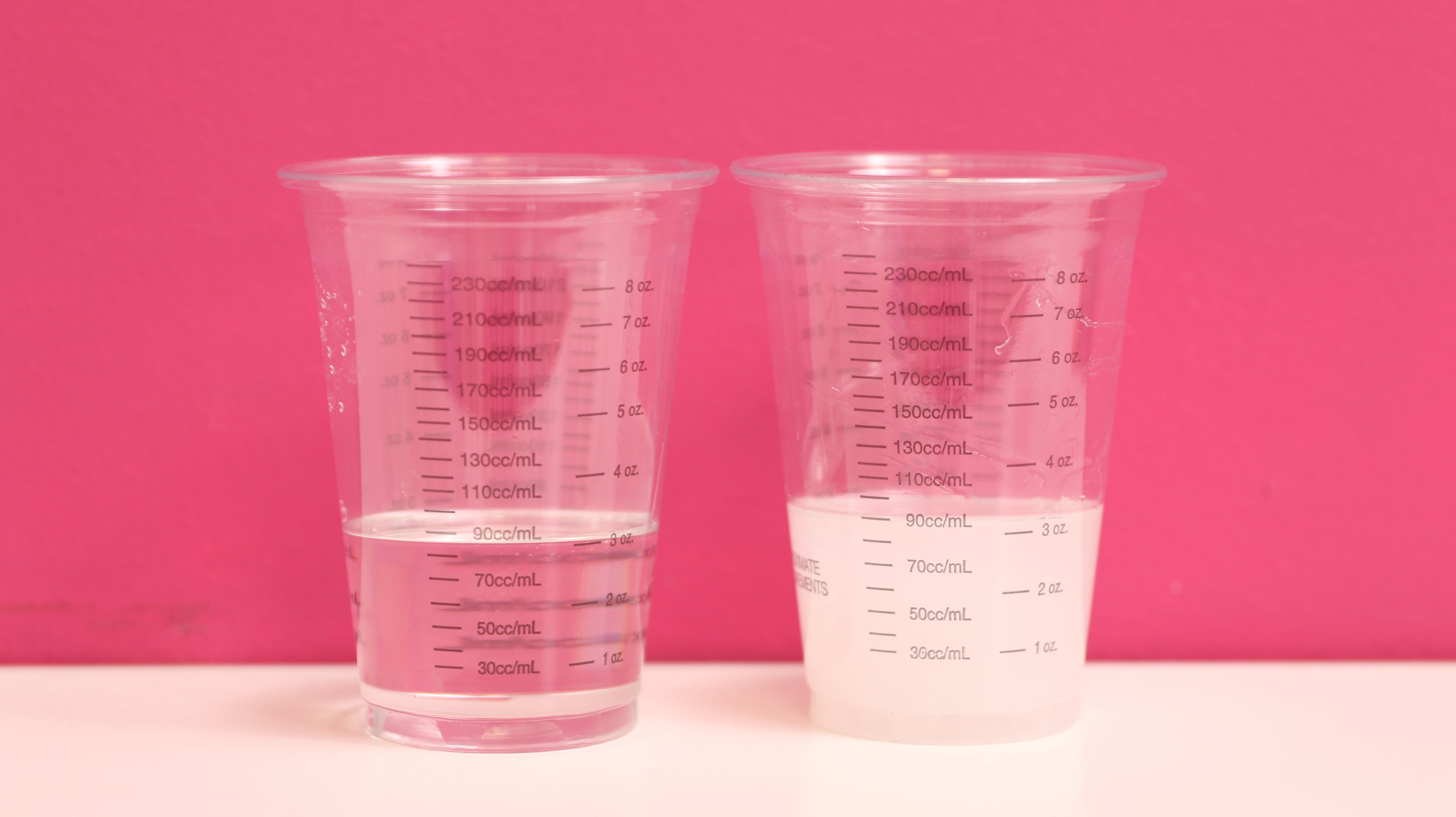A warm water bath is useful if your resin is colder than room temperature, for example, during the winter months. Cold epoxy resin is thick, difficult to spread, and is full of microbubbles, whereas warmer resin is generally easier to work with and has far less bubbles.
A warm water bath is a quick, easy way to bring resin up to room temperature: simply place the tightly capped resin and hardener bottles in a container of warm water for approximately 15 minutes, observing the following tips:
- Warm resin and hardener bottles in a water bath BEFORE measuring and mixing.
- Use warm water, not hot.
- Use a tall, thin container to prevent the bottles from tipping over.
- Leave the lids on, don't submerge the bottles and dry them off thoroughly before opening to prevent water from getting mixed in.
- Let the resin sit in a warm water bath for approximately 15 minutes.
- Heat accelerates curing, so warming the resin will reduce the pot life.
- Don't let warmed resin sit in the cup after you've measured and mixed it or it may cure prematurely.
How Do You Give Resin A Water Bath?
1. Place tightly capped resin & hardener bottles in a container of warm water
Place the tightly capped resin and hardener bottles in a tall, thin container to prevent them from tipping over. Fill the container with warm water until the water line reaches approximately halfway up the bottle.
⚠️ Don't use hot or boiling water in the water bath. Best practice is to use warm water, as you would for a baby's bath. If the resin gets too hot, it can cure prematurely (or even instantly) once mixed.

2. Remove The Bottles & Dry Them Off
After approximately 15 minutes, remove the bottles and dry them off thoroughly with paper towel before opening them.
⚠️ If water gets mixed in with the resin or hardener, it will cause a cloudy cure.

3. Measure & Mix
Measure and mix according to the instructions and use immediately. The warmed resin will be clear, free of bubbles, with a beautiful consistency.
⚠️ Pour warmed resin immediately after mixing. Since curing is accelerated by heat, allowing it to sit in the mixing cup can prompt an exothermic reaction where the resin gets very hot, very quickly, and cures instantly.

An Important Note About Temperature:
While it's important that the resin isn't cold, it's also important that the resin room is warm enough too. For best results, the resin and the resin room should be at least room temperature (and ideally 75-85°F or 24-30°C) and stay at that temperature for the first 24 hours of curing. If the temperature drops, you could end up with surface imperfections in your resin cure.
💡TIP: If you're working with resin in the summer, you may not need a water bath. Learn how hot and humid weather can affect resin.
What Happens If Water Gets In Your Epoxy Resin?
If water gets mixed in with your epoxy resin, it will cause the resin to become milky and to cure with a cloudy appearance. To prevent this, take the following precautions when warming resin in a water bath:
- Leave the caps on while the bottles are in a water bath.
- Don’t submerge the bottles in a water bath.
- Dry the bottles off thoroughly before you open them.

How Long Should Resin Sit In Warm Water For?
How long the resin and hardener bottles sit in a water bath depends on a few factors:
- How cold the resin is.
- How big the bottles are.
- How hot the water is.
At ArtResin we usually let a 32 oz kit sit for about 15 mins in warm water.


Does Heating Resin Make It Cure Faster?
-
Yes, when it comes to epoxy resin, heat accelerates curing. In other words, if you're using a water bath to warm ArtResin, it will cure faster. Always be aware of the following when warming resin in a water bath:
- ArtResin's normal 45 minute working time will be cut down by about 10 minutes: time yourself accordingly.
- Warm the resin and hardener bottles in the water bath BEFORE you measure and mix: if you warm resin that has already been mixed, the heat will cause it to cure instantly.
-
Don't leave your warm resin sitting in the mixing cup: the resin may thicken and cure instantly if left sitting out on the work surface. Get everything ready first, warm your resin, measure and mix and pour right away.


Read more helpful tips on using epoxy resin in during the cold, winter months in our blog How Does Cold Weather Affect Resin?
We hope you found this helpful! Please leave any questions in the comments below.
Do you want to learn more about the mixing & pouring process of epoxy resin? Read our guides:
How To Measure Epoxy Resin & Hardener
How Do I Know When Resin Is Fully Mixed?
How Thick Can I Pour ArtResin?
How Much Epoxy Resin Do I Need?
How To Pour Thick, Layered Resin
ArtResin: The Original Epoxy For Resin Art.
